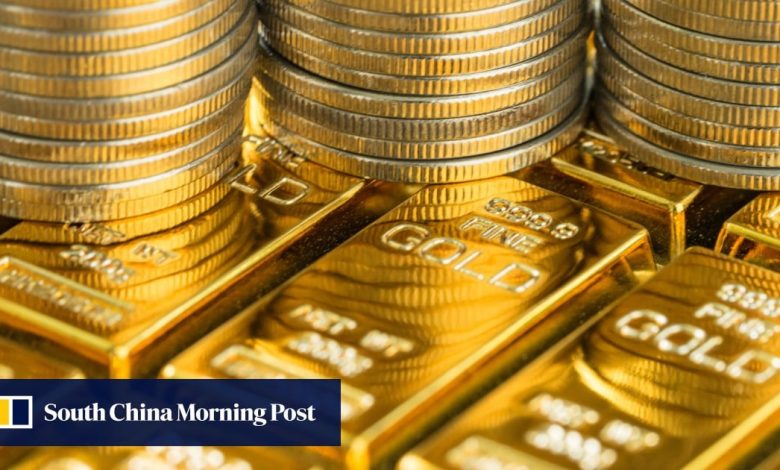Gold fetches record price as central banks stockpile ahead of expected interest-rate cut

A rush for gold shows no signs of letting up, as the price of the bullion hit an all-time high overnight on bets that the Federal Reserve is set to deliver its first interest-rate cut in four years, leading global central banks to amass more of the precious metal to diversify their assets.
The spot price touched a record of US$2,531.75 per ounce overnight, marking a 22 per cent gain this year, and traded at about US$2,510 an ounce on Wednesday. UBS Global Wealth Management expects the metal to approach US$2,700 by the middle of 2025, while Citigroup is even more optimistic, forecasting a rise to US$3,000 in the same time frame.
Gold’s ascent comes in the run-up to the Jackson Hole Symposium on Friday, during which Fed chair Jerome Powell is expected to give clues about anticipated policy easing.
Amid cooling inflation, a cut during the Fed’s September 18 meeting now seems like a certainty, with the market pricing in more than a 25-basis-point reduction, according to the CME Group.
An environment with low borrowing costs burnishes the appeal of gold, which generates no rate-bearing returns.
“We remain bullish on gold and continue to include a meaningful weighting of it in our strategic asset allocation model,” said Gary Dugan, CEO of The Global CIO Office. “The trend has shown underlying strength throughout the year. Expectations that the Federal Reserve will cut rates at the next two meetings, coupled with a slight dip in the dollar, have contributed to gold’s recent momentum.”
Global gold exchange-traded funds (ETFs) bought a net US$3.7 billion of the metal in July, the biggest inflow since April last year, according to the World Gold Council. In China, gold ETFs recorded an influx of 18 billion yuan (US$2.5 billion) in July, the eighth straight month of net buying.
Purchases by global central banks have helped fuel gold’s ascent. They bought 483 tons of the metal in the first half, an increase of 5 per cent from a year earlier, with Turkey, India and China being the biggest buyers, according to the council. Global central banks boosted their gold reserves by more than 1,000 tons last year, according to JPMorgan Chase.
Still, there is a risk that gold prices may overshoot in the short term. China’s central bank held off from gold purchases for the third straight month in July, as prices remained elevated.
“The risk of chasing gold after it hit a record high has increased in the near term,” said Xu Yin, an analyst at Orient Securities in Shanghai. “There’s a risk of a pullback.”

Persistent geopolitical conflicts also underpin the strong gold demand, according to Saqib Iqbal, an analyst at Stockoptionscalculator.com. The protracted Ukraine war, escalating tensions in the Middle East and China’s stance towards Taiwan all prompt investors to shift from risk assets to gold, he said.
“The technical picture supports the precious metal,” Iqbal added. “The only hurdle for gold’s bullish trend is profit-taking, while the primary trend remains strongly positive in the long run.”





